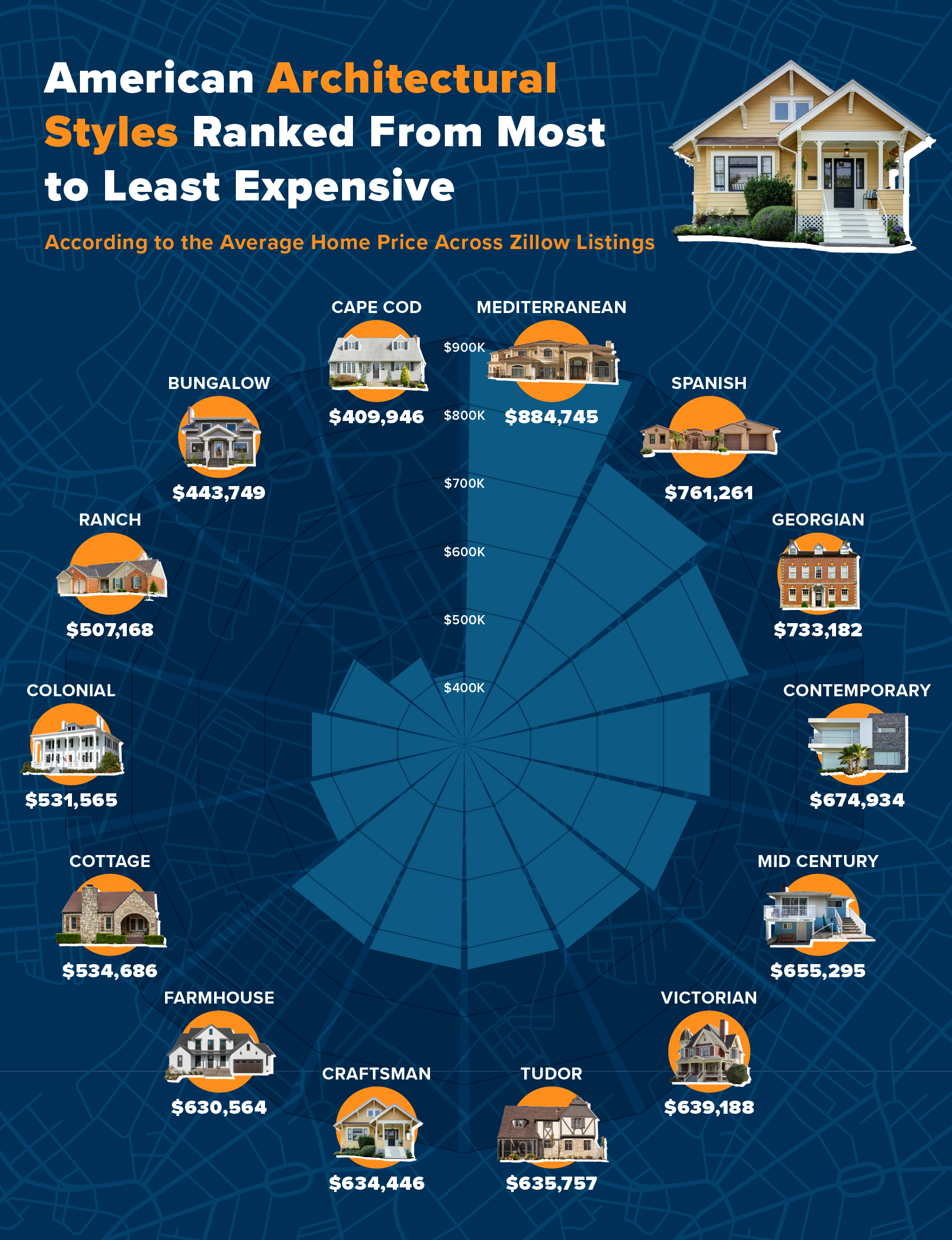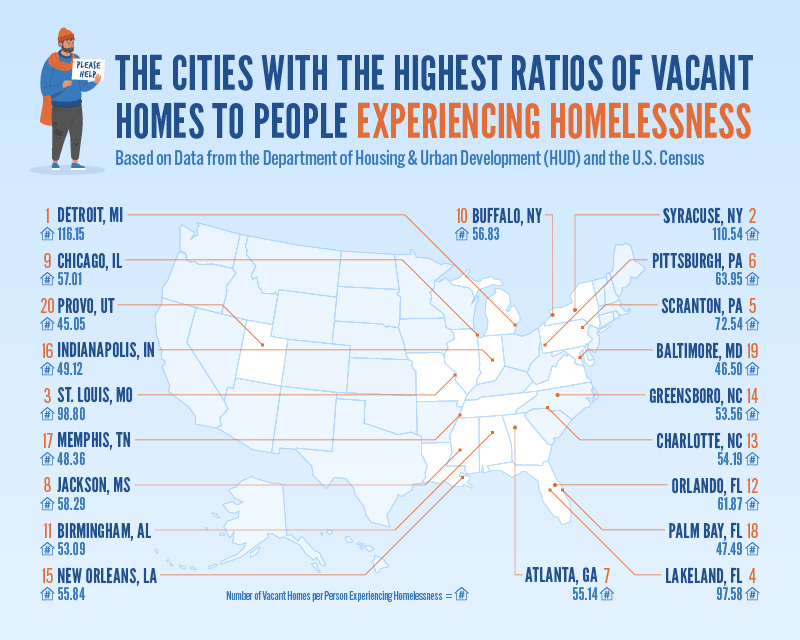Table of Contents
Link building is still an indispensable component of SEO. In a nutshell, link building involves acquiring high-quality links from other websites to your own, which sends trust signals to Google that your content is valuable. We can think of each link as a vote of confidence in Google’s eyes.
At Go Fish, we build links by producing creative content campaigns –– data-rich, newsworthy content that tells a compelling story and that journalists will want to link back to. Many refer to this approach as digital PR.
Digital PR campaigns can come in the form of data studies, surveys, rankings, contests, illustrations, and quizzes, among a slew of other formats.
These types of link building campaigns have never been more competitive across industries, and the real estate + home sector is no exception. In this blog, we’ll focus specifically on link building in the home and real estate niche, providing link builders with a quick guide to producing successful digital PR campaigns in this space.
The Best Data Sources & Formats for Home & Real Estate Content
The Fastest-Selling Home Styles in Every State, The Most Gentrified Cities Around the U.S., The Dream Kitchen Survey, and the Game of Thrones House Sorting Quiz are all strong examples of digital PR campaign ideas, from past and present, within the home and real estate space. But how can link builders come up with these ideas?
Sometimes the ideas spark from a timely or trending event in the news (like a recession or Barbiecore). Sometimes we have a lightbulb moment. But more often than not, ideas spark from a data source –– one that’s either existing or created. Let’s take a look at some of the best sources for both types of data within the home and real estate industries.
Existing Data Sources
Real Estate Marketplaces: Zillow, Redfin, Realtor.com, Apartments.com
Zillow’s research hub has a whole host of housing, time-series data by specific geographies (state, city, zip) from median home values and rent prices to median days on the market and inventory data. Zillow also has several APIs for users who want to dive deeper into real estate metrics like home value forecasts, Zestimates, and neighborhood data.
Government Agencies: U.S. Census, Department of Housing & Urban Development (HUD)
The Census is a real estate link builder’s dream with data tables you can filter for various home and housing metrics, from property taxes and homeowner characteristics to migration patterns and homeownership rates (diced down by every demographic you can think of). Again, most of the datasets can be analyzed both nationally and locally (by state, county, MSA, and more) –– a huge plus for local media outreach when promoting a digital PR campaign.
Trade Associations: National Association of Realtors (NAR), National Association of Home Builders (NAHB)
Trade associations like the NAR store current real estate market insights on both a residential and commercial level. Housing affordability indices, commercial real estate transactions, and gentrification insights, among hundreds of other indicators, are at the link builder’s disposal on the NAR’s research and statistics page.
Created Data Sources
Web Scraping: From sites like Airbnb, Google Trends, Yelp, TikTok, Instagram, Pinterest, Reddit, Zillow, and Redfin
As link builders, we can’t sleep on scraping websites for new data that will help us tell a story. Analyzing TikTok views, pulling search data from Google Trends, or scraping Airbnb listings are all methods for creating a new dataset that will help with:
- Gauging popularity
- Detecting trends
- Uncovering new information
Past campaign performance data shows that 78% of campaigns that use created or scraped data earn organic media coverage, and the average DA of these campaigns’ referring domains is 59 –– considerably higher than average.
AI Tools: ChatGPT, DALL·E 2, Midjourney
It’s no secret that AI is changing the game for content marketing, and digital PR campaigns are no exception. Content marketers can build links within the home and real estate spaces using AI-driven content generation tools like Midjourney or DALL·E 2. These tools produce unique artwork, illustrations, or designs based on specific prompts.
This format is quite a departure from the data journalism approach mentioned above, but can be just as effective given the right topic! Here are a few AI image campaigns in the home space that we’ve got major crushes on:
Here’s what Barbie’s dreamhouse would look like in every state: Sara Aspier used Midjourney to build a Barbie dreamhouse for each state, based on the state’s most common architectural style.
AI imagines a typical home in every state: All Star Home tested Midjourney to generate an “idealistic” home in all 50 states and the 30 largest U.S. cities.
Surveys
Some of the best created datasets continue to be proprietary survey insights. Using automated survey platforms, link builders within the home and real estate industries can launch anonymous polls about homebuying and homeowning topics for the purpose of yielding newsworthy statistics.
For example, we launched the “Zillow Obsession Survey” for a client within the contracting space, inspired by a viral, SNL skit about Zillow browsing. The survey produced head-turning insights such as “53% of respondents have looked up the value of their boss’s house on Zillow” and “49% of respondents would rather browse Zillow than have sex” which helped the campaign earn coverage from top outlets like House Beautiful, Business Insider, and HuffPost.
Home + Real Estate Digital PR Campaign Examples
Now that you’re familiar with some of the best sources and formats for digital PR campaigns in home and real estate content, let’s look at some real-life campaign examples.
The Most & Least Expensive Architectural Styles Around the U.S.
Many studies have been conducted about the most popular home architectural styles based on Google search data or quotes from industry experts. There are countless listicles on the subject in the search results, but to build quality links from top-tier news outlets, we need to provide unique value for the journalists we’re pitching to.
In this case that meant providing them with new and unique data that they don’t already have access to or don’t have time to pull themselves.
In “The Most Profitable Architectural Styles Around the U.S.” campaign, we used a web scraping tool to find the average home price and number of days on the market for different architectural styles (from Colonials to ranches) across thousands of Zillow home listings in 50 U.S. cities. The study told a compelling story about how certain architectural styles are more valuable than others depending on where you live.
With fresh data, a sound methodology, and a strong local angle, this campaign was able to earn coverage from top business journals and local news outlets around the country.
Vacant Homes vs. Homelessness in Cities Around the U.S.
For digital PR campaigns to build links organically, we often need to piggyback off of the news cycle or go where the reporters already are. In this case, that meant producing a campaign that could be tied back to unaffordable housing during a time when mortgage rates were through the roof, housing inventory looked dire, and rent prices continued to rise.
In the “Vacant Homes vs. Homelessness Around the U.S.” campaign, we used data from the Census and HUD to compare home vacancy rates to homelessness across America’s largest cities, highlighting the ongoing challenge to find affordable housing for both renters and buyers alike.
A newsworthy angle, local insights, and a combination of authoritative data sources helped this campaign earn coverage from top real estate, local, and national news reporters.
Surveying Americans on Their Home Organization
In order to earn a high number of high-quality links, we also need to make sure our content is relevant to a wide audience of readers. “The Home Organization Survey” campaign is a shining example of wide relevance. We surveyed U.S. homeowners about their home organization systems, their biggest sources of clutter, and the messiest rooms in their COVID-era homes.
Relaying unique insights around a highly relatable topic with broad appeal helped this campaign earn dozens of backlinks from top-tier home and lifestyle sites.
Wrap-Up
Let’s face it –– link building is hard in this day and age. More and more sites are vying for coverage across top media outlets. The competition is fierce, but hopefully, these strategies can help you produce campaigns that will stand out amidst the clamor of the digital PR world.
Need help earning links? Get in touch with our team at Go Fish Digital to learn more about our approach to digital PR.
Search News Straight To Your Inbox
*Required
Join thousands of marketers to get the best search news in under 5 minutes. Get resources, tips and more with The Splash newsletter:



